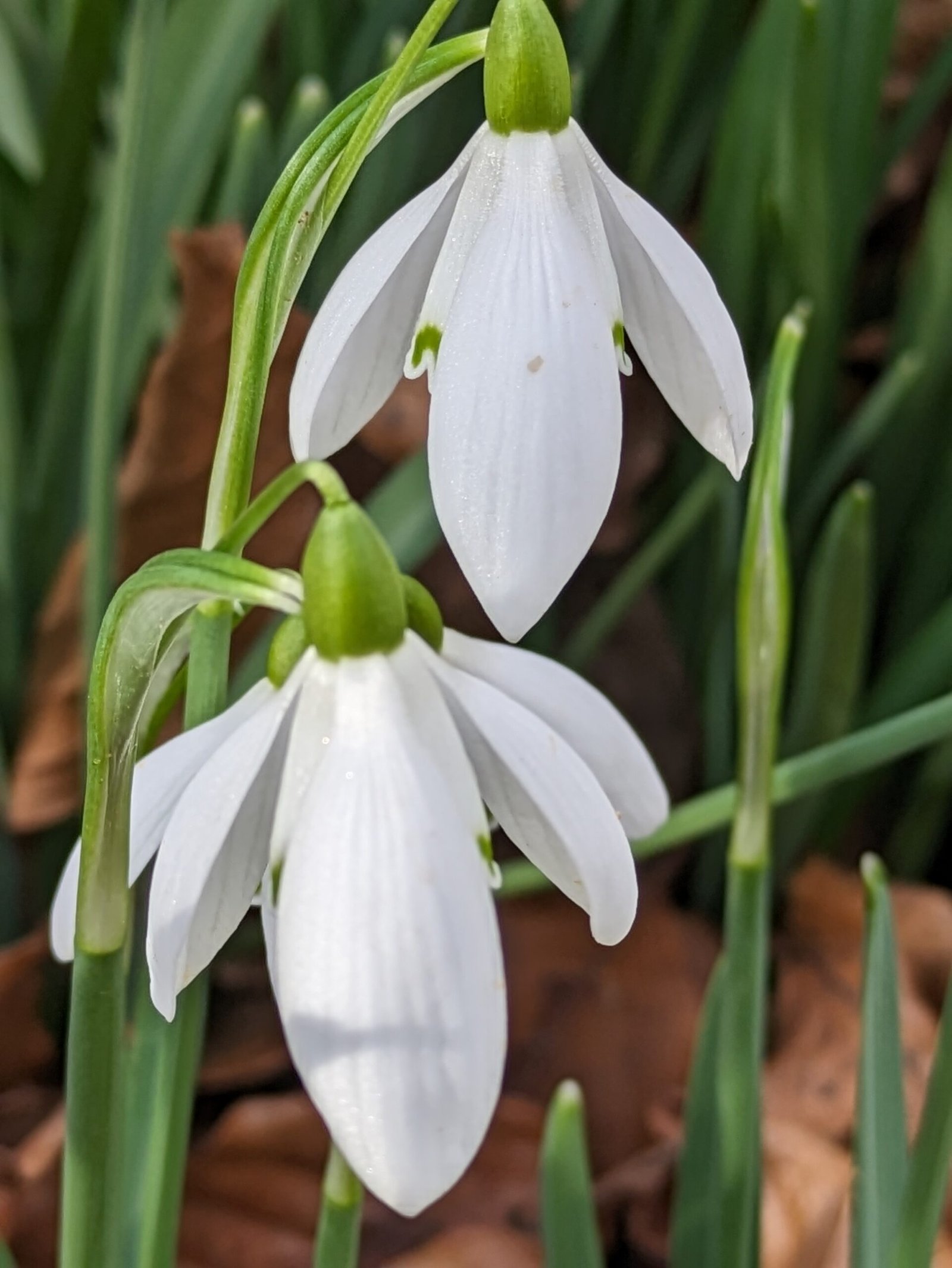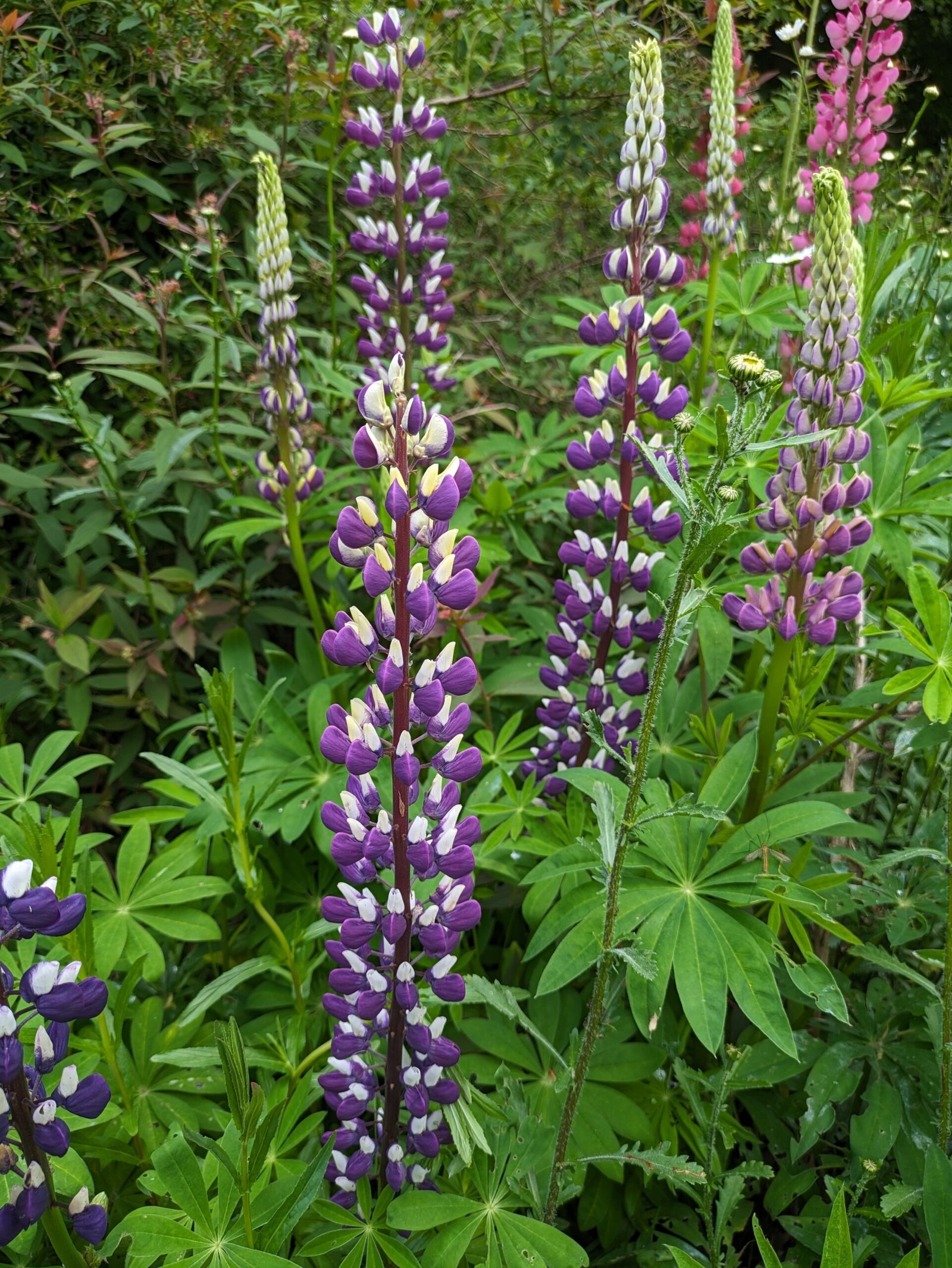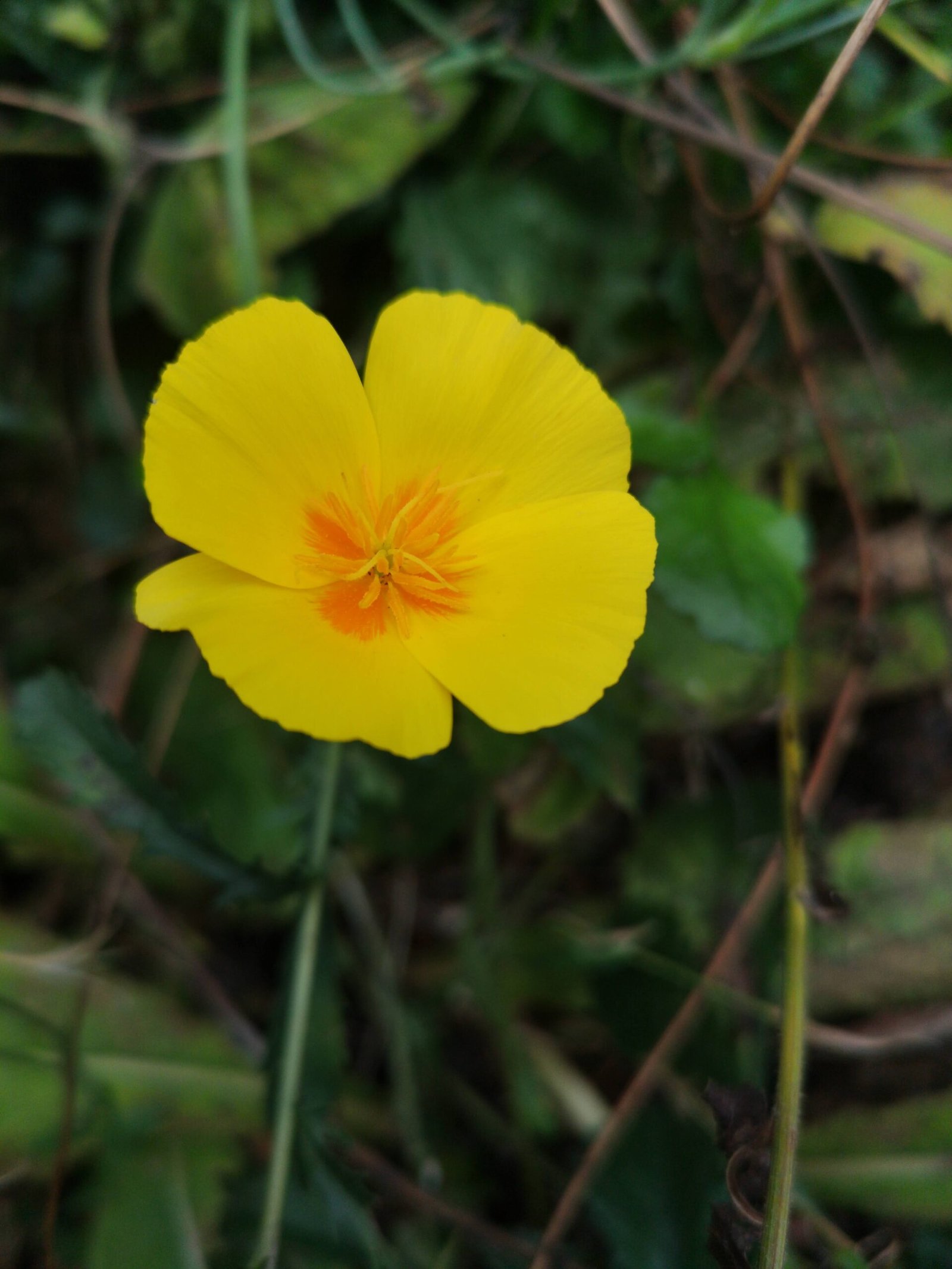I’ve covered native flowers, and now it’s the turn of the non-native flowers. While it is good to plant native, provided you choose non-natives carefully and don’t let them take over, these plants can be beneficial too. Some of the below plants have been naturalised, meaning that it grows on its own in nature in its new environment. As with the native flowers, there are many more to choose from, so there may be some flowers you want to grow that I haven’t listed here.
Winter & spring flowering
Snowdrops
Perennial.
Plant snowdrop bulbs immediately after buying, in late April or May. Divide clumps as the leaves are turning yellow. Collect and sow seeds as soon as they ripen, around mid May – mid June.
Grows up to 5 inches tall and spreads up to 8 inches.
Grows best in partial shade.
Flowers from January to March.
They are a great early source of pollen for pollinators.
They have been naturalised after being brought to the UK in the 15th or 16th century.

Late Spring and summer flowering
Lupin
Usually perennial.
If you are buying them as plants, then plant them as they become available, between March and July. If you are sowing seeds, then do so between late March and late April.
Grows up to 1 1/2-4 ft tall, depending on variety. Spreads 1 1/2-3 ft.
Grows best in full sun.
Flowers in May and June.
They are very good at attracting pollinators.
Naturalised to the UK. They readily self-seed and grow big roots, so keep them under control.

Summer flowering
Pot Marigold
Annual.
Sow seeds between late March and late June, or between late September and late December.
Grows up to 8-24 inches tall and spreads up to 1-2 ft.
Grows best in full sun.
Flowers between June and September if sown in spring, or May to July if sown in autumn.
They are great companions for many plants as they repel many different pests, and can attract pollinators.
The petals are edible.

Borage
Annual.
Best to sow seeds or plant young plants in April or May, but can be done at other times of the year.
Grows up to 1 1/2-2 ft tall and spreads up to 3/4 ft.
Grows best in full sun, but can grow in light shade too.
Flowers between June and September.
Leaves and flowers are edible.
Good for attracting pollinators and other beneficial insects.
Readily self-seeds.

Love-in-a-Mist
Annual.
You can sow seeds outside between April and September.
Grows up to 16-24 inches tall and spreads 8 inches.
Grows best in full sun.
Flowers between July and September.
Naturalised in the UK after being introduced in the 16th century.
Readily self-seeds.

Summer and autumn flowering
California poppy
Annual.
Sow seeds in March, April, May, August or September.
Grows up to 1 1/2 ft tall and spreads up to 1 1/2 ft.
Grows best in full sun.
Flowers between June and October.
They have been naturalised in the UK.
The flowers and seeds are edible.

Rose Campion
Hardy biennial or short-lived perennial.
You can sow seeds between late February and late April or between late September and late December.
Grows up to 1-2 ft tall and spreads up to 1 1/2 ft.
Grows best in full sun.
Flowers from June to October.
It has been naturalised to the UK in some areas.
Readily self-seeds.
Sunflowers
More of a typical ‘crop’ plant than the other flowers here.
Usually annual, but some varieties are perennials.
Sow seeds inside from mid April to late May, or sow outside after your last frost.
Depending on variety, they can grow up to 13 ft tall, but most varieties won’t be as tall as that, but you can still expect them to be at least 6 ft tall.
Grow best in full sun.
Typically flower from late July to early October.
They will self-seed.
Good at attracting pollinators and other beneficial insects that prey on insect pests.
You can harvest the seeds to eat once the flowers have died back completely and the back of the blooms are brown.

Nasturtium
Annual.
Sow seeds between March and June.
Grows up to 5-8 ft, and is a climber, meaning it will spread on the ground or grow up a support.
Grows best in full sun.
Flowers between late July and your first frost.
They are great companions for many plants as they attract pollinators and can act as a trap crop, luring pests to them instead of other plants.
All parts of the plant are edible.

I am proud to be affiliated with JustSeed, a company that I have bought seeds from for a few years now. I believe in what they are doing over there, and if you are going to buy seeds, garden tools, or seedlings, then please consider checking them out and using my link below to do so. Thank you for supporting me.






Leave a Reply